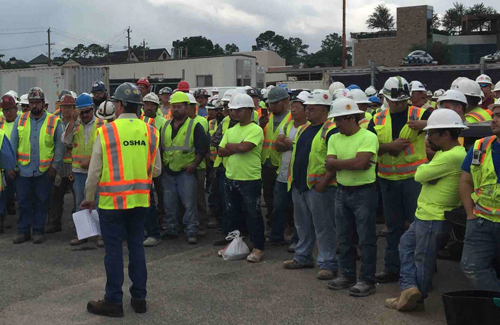Mobile crane safety training is pivotal in enhancing operator performance and minimizing downtime across construction and industrial sites. The nature of mobile cranes—large, complex machines used for lifting and moving heavy materials—necessitates rigorous safety protocols to ensure both operational efficiency and worker safety. Training programs focused on mobile crane safety equip operators with the necessary skills and knowledge to handle these machines effectively while adhering to safety standards. This training covers various aspects, including proper crane operation techniques, load management, and hazard identification, which directly impact the overall performance and reliability of the equipment. Effective mobile crane safety training begins with a comprehensive understanding of the crane’s mechanics and operational controls. Operators are taught to recognize the specific functions of different controls, interpret load charts accurately, and implement proper lifting techniques. Mastery of these elements not only ensures that loads are lifted and moved safely but also prevents common errors that could lead to accidents or equipment damage. Additionally, training emphasizes the importance of regular maintenance checks and inspections to identify and address potential issues before they escalate into serious problems.

The benefits of well-executed safety training are evident in the improved performance of crane operators. Trained operators are more adept at maneuvering cranes in various conditions, from tight spaces to challenging terrains. Their ability to anticipate and react to potential hazards reduces the likelihood of operational errors and accidents. This proficiency not only enhances the efficiency of lifting operations but also contributes to a safer work environment. When operators are skilled and confident in their roles, they can perform tasks more quickly and accurately, thereby reducing the overall time required for lifting and moving materials. Moreover, mobile crane safety training significantly reduces downtime, a crucial factor in maintaining productivity on job sites. Untrained or inadequately trained operators are more prone to making mistakes that can lead to equipment breakdowns or accidents, resulting in costly downtime. By ensuring that operators are well-trained, organizations can minimize the frequency of such incidents, thereby keeping the cranes in continuous operation.
This reduction in downtime translates to increased productivity and cost savings, as fewer interruptions in the workflow mean that projects are completed more efficiently and within budget. In addition to enhancing operator performance and reducing downtime, safety training also fosters a culture of safety within the workplace and finds more details in about us. When safety practices are prioritized and consistently reinforced through training, employees are more likely to adhere to established protocols and report potential hazards. This proactive approach to safety helps in preventing accidents and injuries, creating a more secure environment for everyone involved. Overall, mobile crane safety training is a critical investment in both operational efficiency and worker safety. By equipping operators with the necessary skills and knowledge, organizations can improve crane performance, minimize downtime, and foster a culture of safety. The benefits of such training extend beyond individual performance, contributing to the overall success and productivity of construction and industrial projects.